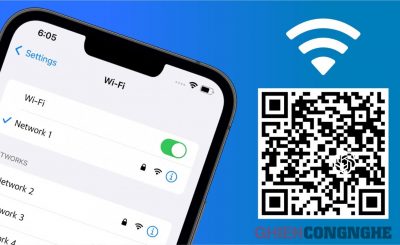At Apple’s Worldwide Developers Conference (WWDC) 2019, the company announced a whole new way to enjoy iPad with iPadOS. The revamped iPadOS is now an Apple-only option for tablets, offering the same features as iOS 13 for iPhone, along with some great additional tools.
Whether you’re a brand new iPad user or a longtime iPad user learning about iPadOS for the first time, here’s an introduction to the basics iPadOS has to offer.
New iPad Home Screen
The home screen on iPadOS gives you redesigned layout options and cool widgets that you can pin for easy access.
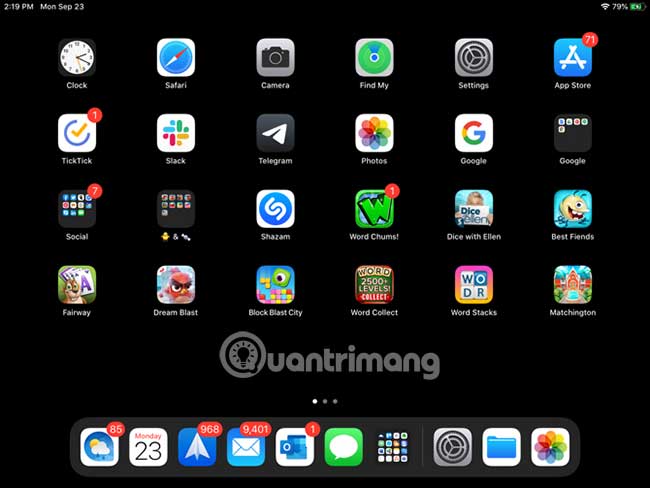
Change layout
When you look at iPadOS, you’ll immediately notice that it holds more app icons on the screen. The grid of apps is tighter, allowing you to see more apps at once. However, if you don’t like this, you can change it.
1. Open the app Settings and choose Display & Brightness.
2. In Home Screen Layouttick the option Bigger.
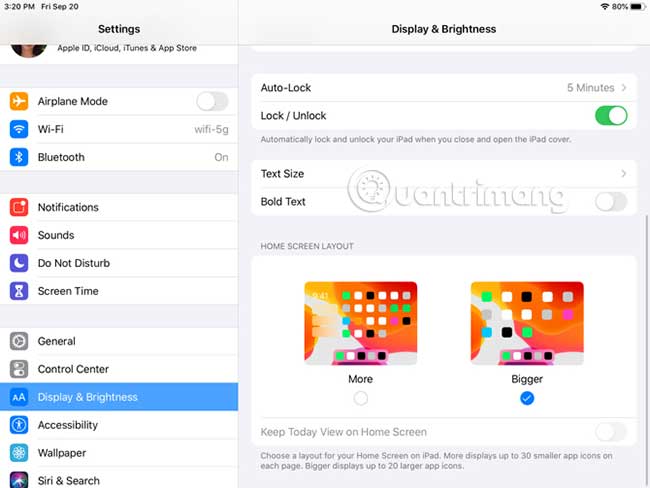
Bigger will bring the grid of 20 app icons back on your desktop, while with the layout More, you get 30 app icons.
Today View
Another improvement to the iPad home screen is the view mode Today View. Access this handy section by swiping from left to right. Then you have a quick view of the date and time, along with widgets.
You can choose to keep Today View on your home screen or just access it by swiping. To keep it on the home screen, follow these steps:
1. Open the app Settings and choose Display & Brightness.
2. In Home Screen Layoutturn the switch for option Keep Today View on Home Screen to state On.
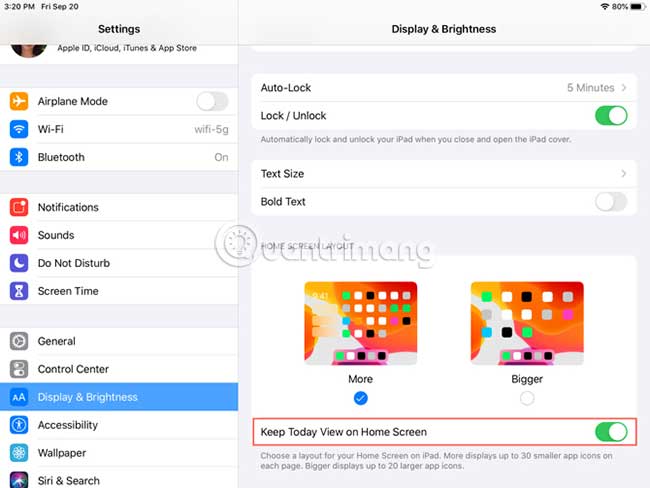
You may also see a message at the top of Today View that says Add to Home Screen. Just tap it to add it. Alternatively, you can swipe to the bottom of Today View, tap Edit and switch the switch on the next screen to On.
Note that if you decide to keep Today View on your home screen, it will only stay there when in landscape view.
Pinned and Favorite Widgets
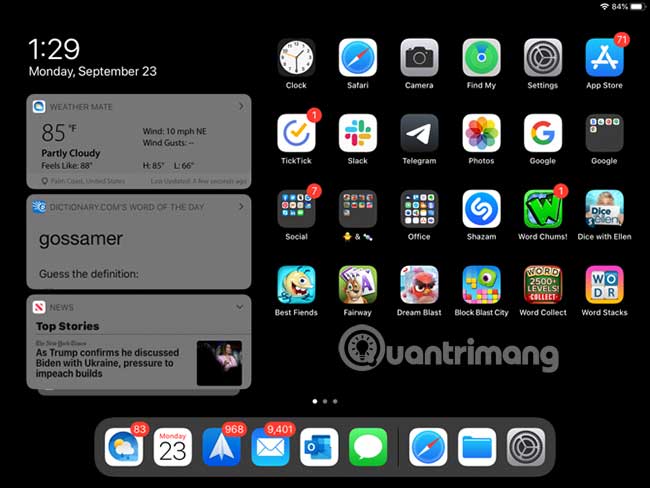
The Today View described above is a useful spot for app widgets, similar to the Today Screen widgets on the iPhone. So it’s perfect for those apps that you use every day or multiple times per day. Plus, the best widgets give you a quick look at information like weather, tasks, news, or many other app-related details.
To add, remove, and rearrange widgets, swipe to the bottom Today View and press Edit. You have two ways to handle widgets in Today View: Pinned Favorites and Favorites.
Favorites are widgets that will appear in Today View, while Pinned Favorites is the item Favorite will always appear in Today View. If you open Today View and swipe down, the only widgets you will see are Pinned Favorites. Then just swipe up to see all the favorites (Favorites).
Now, you know the difference between widgets. You can set them on the screen Edit there. Tap the green plus sign to add the widget to Favorites. To turn Favorite into one Pinned Favorite, touch and drag the item to the section Pinned Favorites at top. And to rearrange widgets, just tap and drag them where you want them. Press Done when you’re done.
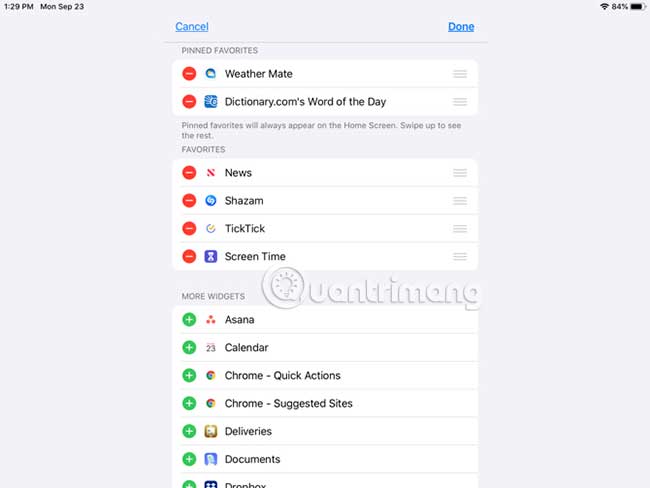
Other changes on home screen
You may notice a few additional changes to the home screen with iPadOS.
To rearrange apps, press and hold the app’s icon as usual. You will then see a pop-up menu with shortcuts to apps and options Rearrange Apps. If you don’t make a selection from the shortcut menu and keep holding the app icon, all apps will wobble, just like on iOS 12 and earlier, then you can move or delete them.
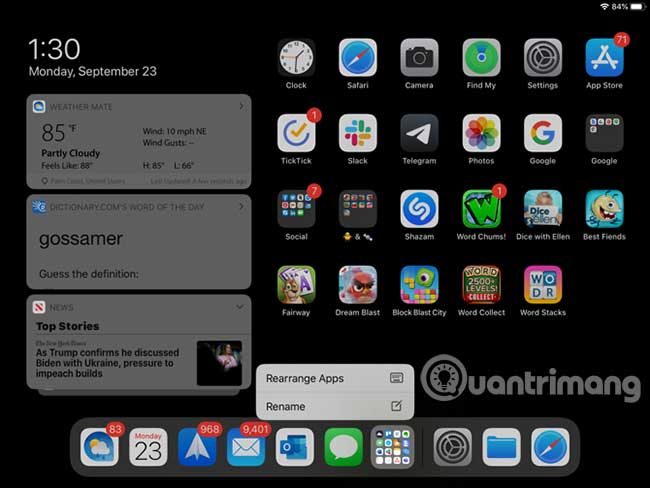
You can now add folders to the Dock on iPad. Hold a folder, select Rearrange Apps and move it to Dock. Or, hold until the shortcut menu disappears, the folder wobbles and then moves it.
New iPad keyboard
You’ll be happy to see improvements to the keyboard (like QuickPath, which lets you swipe to type) in both iOS 13 and iPadOS. In addition, iPadOS also gives you a floating keyboard.
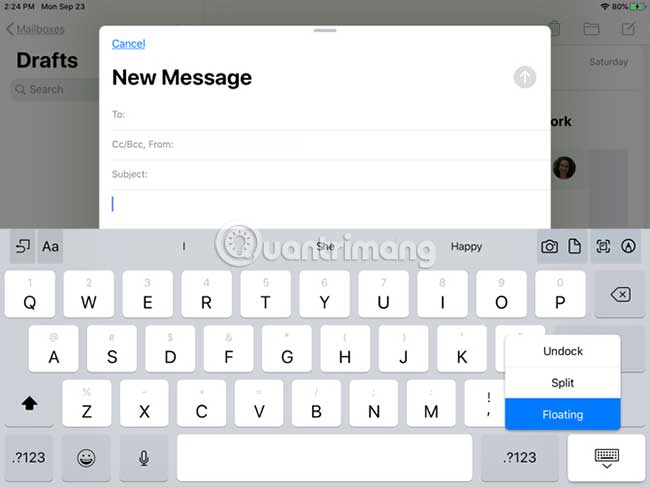
Floating keyboard
The floating keyboard is one of the additional features available in iPadOS. With this new feature, you can minimize the keyboard and move it wherever you want on the screen. This gives you a larger view of what you’re typing without being interrupted by a large keyboard.
Plus, the floating keyboard also uses QuickPath, so you get two new features in one with an iPadOS keyboard.
You can make the keyboard float using one of two convenient methods:
- Touch and hold the keyboard button at the bottom right, then slide your finger up Floating.
- Pinch two fingers in the center of the keyboard.
When you see the keyboard shrink, you can place it anywhere on the screen by dragging the bottom line of the keyboard. To return the keyboard to its normal size, swipe two fingers extending outward from the center of the floating keyboard.
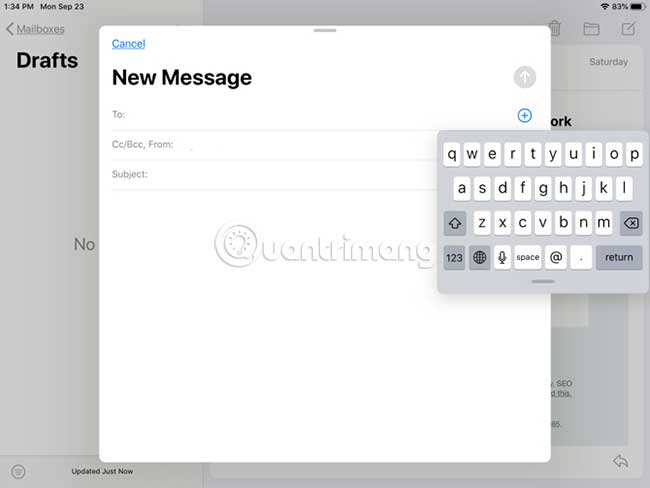
QuickPath
If you’re a fan of apps like SwiftKey or Gboard, which let you swipe to create words instead of pressing individual keys, then QuickPath is the option for you.
Just slide your finger over each letter of a word without releasing it until you move on to the next word. This is a useful feature for people who can’t improve their thumb typing speed. As mentioned, you can also access this feature on iPhone with iOS 13.
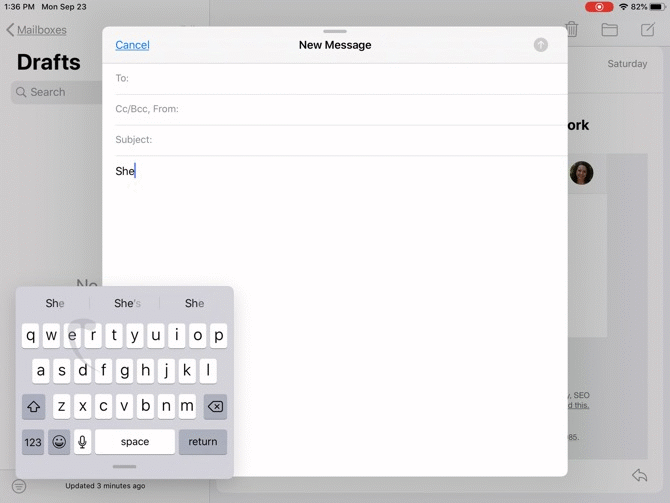
If you don’t want to use QuickPath when using the floating keyboard, you can disable it:
1. Open the app Settings and choose General.
2. Press Keyboard.
3. At the bottom in the language area, toggle the switch for the option Slide on Floating Keyboard to Type about status Off.
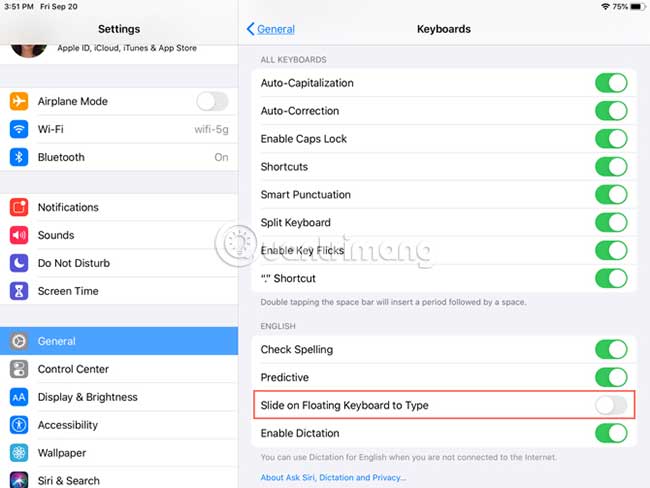
Dark Mode
While Dark Mode is a feature available on both iPadOS and iOS 13, it’s definitely worth a mention for iPad users. This attractive theme (first appeared on macOS Mojave) is now available on Apple mobile devices.
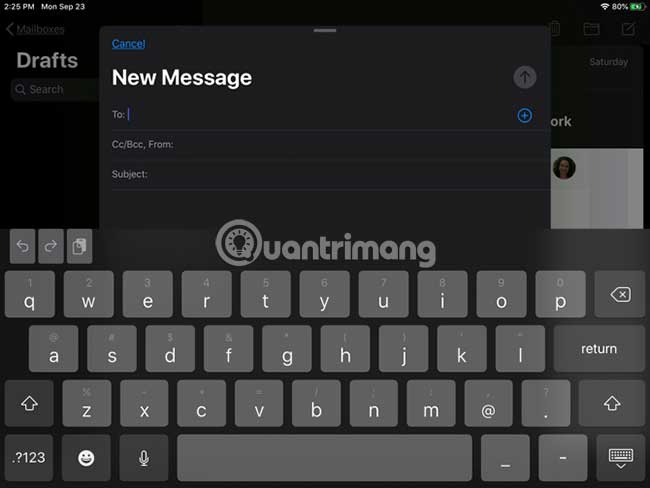
This setting helps to reduce eye strain and reduces the screen’s brightness so as not to affect those around you. You can see the richness of Dark Mode in built-in apps, system views, and some third-party software. You will also find a lot of third-party iOS apps that support Dark Mode.
Activate Dark Mode
You can manually enable Dark Mode on iPad with a few simple steps:
1. Open the app Settings and choose display & Brightness.
2. Below Appearance, tick the button Dark.
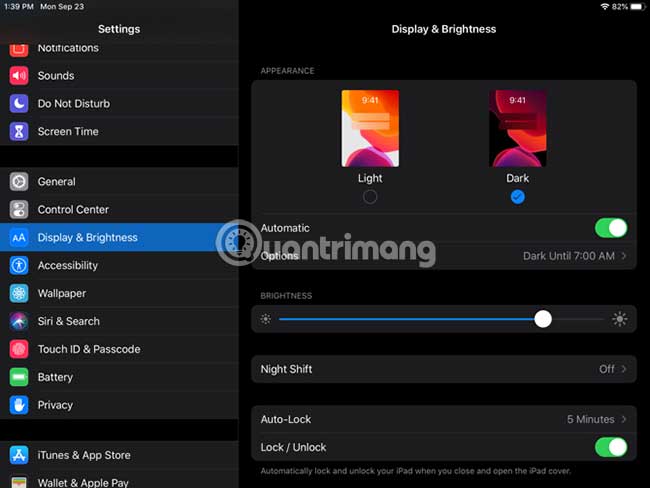
You can also schedule Dark Mode to turn it on and off. This is a great way to enable the feature without having to open it Settings each time and do it manually.
1. Open the app Settings and choose Display & Brightness.
2. Below Appearance, toggle switch for option Automatic about status On.
3. Press Options and set it to Sunset to Sunrise or choose Custom Schedule to set a specific transition time for light or dark mode.
The fact that Apple created iPadOS, its own system for iPad users, is a surprise. But as you can see, this operating system offers extra options and features that you don’t get on iPhone. Hopefully, this means that Apple will continue to give iPadOS its own unique features and make it even more useful for tablet users.
For more about iPad in general, see the article: How to Connect and Use a Mouse to iPad or Which iPad Should You Buy?
Good luck!
Source link: The basics of using iPadOS
– https://techtipsnreview.com/


